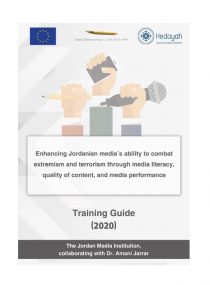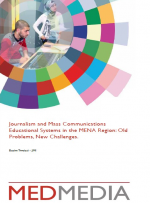
Journalism and media education systems in most Middle East and North Africa countries remain until this day unable to produce media professionals, a study by Jordan Media Institute (JMI) revealed.
The specialized paper also said that many Arab media outlets have, until recently, relied on graduates in other disciplines due to the shortage in supply of qualified practitioners locally and regionally.
The study, entitled: “Journalism and Media Education Systems in Middle East and North Africa Countries: Old Problems Continue, New Challenges Arise”, said that media schools and institutes had limited impact on professional media development.
According to the research paper, prepared by a team headed by JMI Dean Dr. Basim Tweissi, journalism and media education systems made little contribution to the creation of an independent media industry.
The study reviewed education programs in 120 higher education institutions in nine countries (Jordan, Palestine, Syria, Lebanon, Iraq, Egypt, Tunisia, Algeria, and Morocco). The research was conducted as part of the activities of the EU-funded MedMedia Project that aims to advance media reforms on both sides of the Mediterranean.
The study sought to develop media reform policies that enhance the capabilities of academic institutions to produce professional media practitioners who are equipped with the skills and knowledge to meet market demand. With an enabling environment, the media can play a positive role in the democratic transition process, promoting freedom of expression, ensuring pluralism, and respecting other views, the study explained.
The study found that traditional courses and specializations still dominate education programs offered by these institutions. These institutions failed to offer modern programs that match modern trends and new requirements in the media. Added to that, most of the content of these programs was similar and repetitive. Moreover, some universities confused between electronic journalism and digital journalism. Very few programs in digital or social and multi-media were on offer, showed the study.
In analyzing the criteria of these journalism and media programs, the study showed that most of these criteria were not up to standard criteria, and were hard to measure. They did not embrace transformations in journalism and the media industry and the new trends adopted by media schools around the world either.
The study also found that Grade 12 final marks was the only criteria for accepting students in journalism and media programs. Placement tests and personal interviews are not part of the admission requirements in educational institutes that offer these programs. Furthermore, the number of students accepted in these specializations was in excess of the capacity of these institutions, and exceeded market need.
As for faculty members, the study revealed a stunning shortage in most universities of educators specialized in journalism, media studies, and mass communication. Scholarship programs for students to pursue postgraduate courses in reputable universities have also been suspended. Resistance to change and lack of professional experience of some professors was also noted. Given the huge number of students admitted, some universities had to assign professors with humanities and social science degrees to teach journalism and media courses.
Additionally, most media education courses tended to focus on the theoretical knowledge rather than the practical application of relevant theories; 60% focused on the theoretical side, and only 7% had the right balance.
After reviewing the study plans and syllabi, the researchers found that only 23% of institutions offered courses on digital media applications, while data journalism is offered in only 4% of the total. Courses on the protection and safety of journalists and investigative reporting were only available in 3% and 35% of these institutions respectively.
The study also noted that the study plans were imbalanced. It added that the curricula did not sufficiently adapt to emerging needs and trends in the media and digital transformations in the industry. Many media institutes also lacked basic facilities such as radio and TV studios, editing, and production labs.
The study proposed a road map for reforming media education that includes the following:
- Developing a general policy paper that identifies the key and sub-policies needed to overcome outstanding challenges.
- Generating the political will that seek to reform the education systems in target countries.
- Supporting and ensuring the sustainability of new centers of excellence that teach journalism.
- Facilitating student and faculty exchange programs locally and internationally and building cooperation networks.
- Launching a project for developing journalism and mass communication syllabi with the participation of at least 20 Arab universities and institutions.
- Urging universities to launch scholarships for faculty members.
- Developing a vision for enhancing the capacities of Arab universities in media innovation.
The study used multiple methods in data collection and analysis of education systems in target countries. These included desk research and literature review. A survey of the 120 institutions that offer journalism and mass communication programs, representing 95% of educational institutions in the nine target countries, followed. Additionally, a sample of media outlets was taken and examined to analyze the relation between media schools and the industry.



